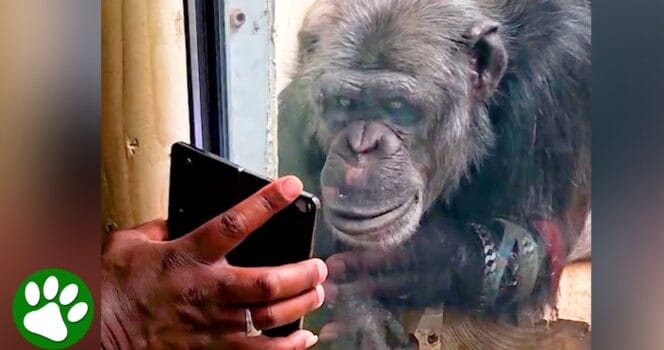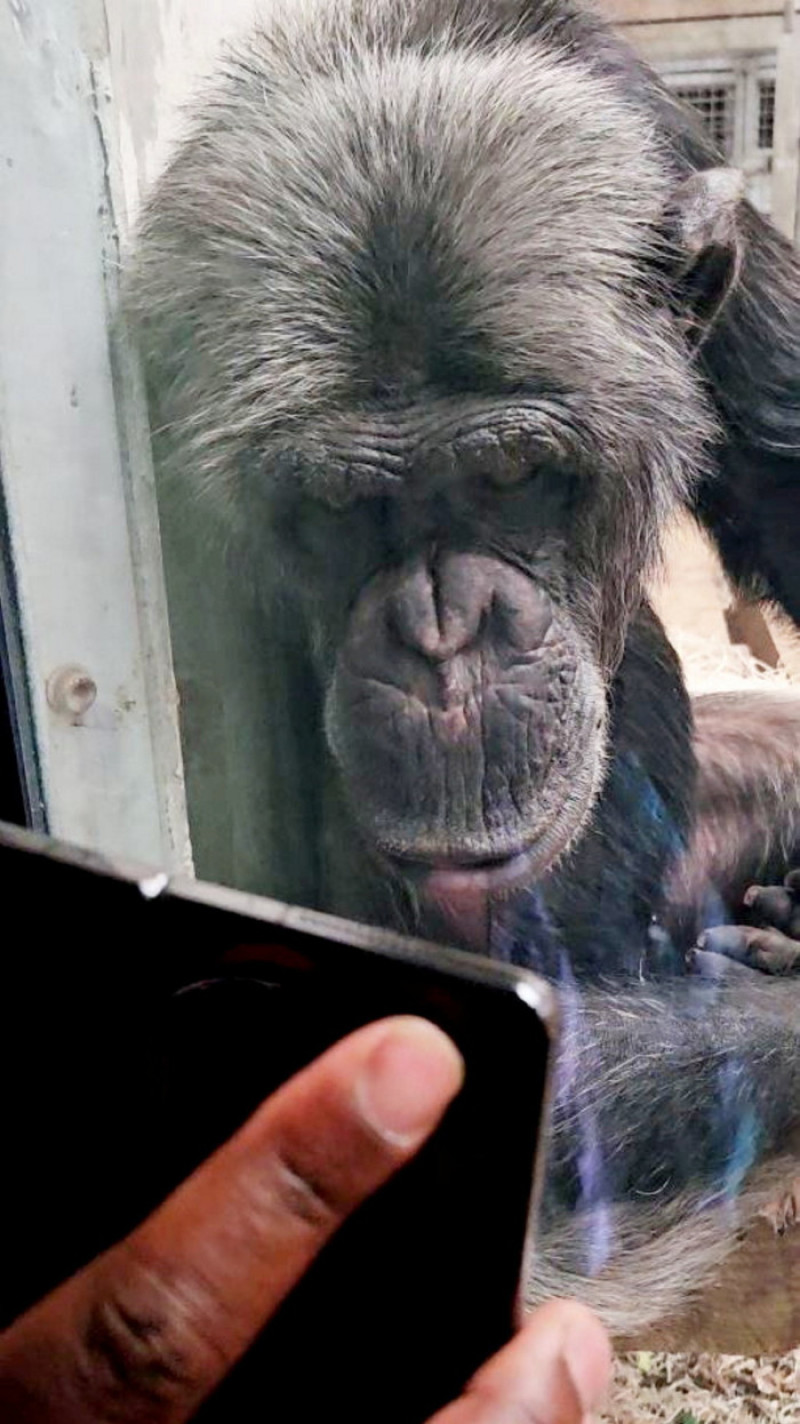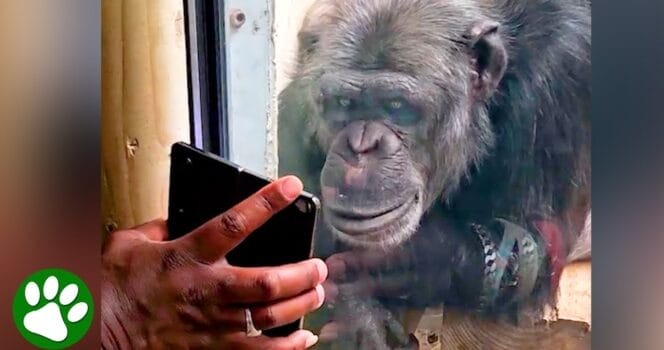It was a quiet afternoon at Wingham Wildlife Park in Kent, UK, when a curious encounter captured the hearts of visitors and soon, the world. Tammy Layne, 54, was visiting the park with her partner when she noticed a chimpanzee staring intently at her phone. On the screen played a classic scene from King Kong, and what happened next was pure magic.
The chimp’s eyes followed every move of the giant ape wreaking havoc on screen, its expression shifting with the action. For the visitors, it was a moment of laughter and awe—a wild primate completely absorbed in a fictional world. Within hours, videos of the moment went viral, drawing praise, jokes, and speculation about the chimp’s cinematic tastes. Social media dubbed it “the ultimate King Kong fan,” and viewers couldn’t get enough of the chimp’s priceless reaction.

A Captivated Audience: What Happened at Wingham Wildlife Park
Tammy and her partner had first shown the chimp a longer video featuring playful chimpanzees, which the primate watched with interest. But when the King Kong clip appeared, something remarkable happened: the chimp froze, eyes glued to the screen, seemingly captivated by the action. The primate’s focus was so intense that it ignored other distractions, a behavior strikingly similar to human movie watchers.
Comments on social media ranged from humor to heartfelt observation: “That chimp is more invested in King Kong than I ever was,” wrote one viewer. Another suggested, “Next up: chimp movie review channel on YouTube?” While many laughed, some observers reflected on the limitations of captive life, noting that seeing a chimpanzee behind glass can be bittersweet.

Chimps and Cinematic Curiosity
This isn’t the first time chimpanzees have shown interest in videos. Research in Japan observed that chimps could focus intently on clips of a human in a furry ape costume and remember specific details when shown the video again 24 hours later. Eye-tracking data revealed that the primates remembered key moments, such as the “hammer scene,” suggesting impressive memory and observational skills.
Scientists have long studied the ways in which primates engage with visual media. While captive settings differ from the wild, these behaviors hint at deeper cognitive abilities. For example, chimps are capable of recognizing patterns, recalling past events, and demonstrating curiosity—traits that help explain why they might respond to complex visual stimuli like movies.

Shared Experiences and Social Bonds
Beyond memory and focus, studies suggest that chimpanzees may form stronger social bonds through shared viewing experiences. In research published in Proceedings of the Royal Society B, chimps, bonobos, and other great apes were shown short video clips either alone or with a partner. Those who watched together approached each other faster and stayed closer afterward, implying that shared attention can foster sociability.
This behavior mirrors human tendencies to connect through entertainment. Watching movies, listening to music, or enjoying performances are activities often linked to social bonding. Observing similar patterns in primates suggests that these behaviors might have deep evolutionary roots. Even short interactions can reinforce relationships, showing that the urge to share experiences is not unique to humans.

A Blend of Wonder and Speculation
While the chimp at Wingham Wildlife Park may not truly “understand” King Kong the way humans do, its fascination offers a window into primate cognition. Speculatively, it’s possible that the chimp responded to visual motion, perceived tension, or even the social dynamics on screen—elements that echo the kinds of challenges and interactions chimps encounter in the wild.
Moments like these spark curiosity and reflection. They remind us that animals perceive the world in ways that can be both familiar and profoundly different from our own. The chimp’s engagement with a film blurs the line between entertainment and observation, hinting at an awareness and attentiveness we often reserve for human audiences.
Reflections on Human Curiosity
The story of a chimp transfixed by King Kong highlights more than viral amusement—it underscores the power of curiosity and connection. Humans have long sought to understand the minds of other species, bridging the gap through observation, research, and storytelling. Each moment of engagement, whether in a zoo or the wild, adds to our understanding of cognition, emotion, and social behavior in animals.
Shared experiences, even across species, reveal the universality of attention and the enjoyment of narrative. The chimp’s reaction invites us to reflect on the richness of life around us and the ways curiosity drives learning, empathy, and discovery. It’s a reminder that wonder is not confined to humans; it’s a shared trait that stretches across the animal kingdom.

Conclusion
From a viral moment at a UK wildlife park to insights in scientific research, chimpanzees continue to captivate and inspire. Their ability to focus, remember, and engage with visual media hints at cognitive capacities that invite both humor and awe. While we should approach such interactions with careful respect for animal welfare, moments like the chimp watching King Kong remind us of the joy in observing curiosity at work. The scene, both entertaining and thought-provoking, celebrates the connection between humans and the natural world, showing that wonder truly knows no boundaries.
Sources
Newsner Stories. “You have to see this chimp watching King Kong — the reaction is priceless.” en.stories.newsner.com
Proceedings of the Royal Society B. “Shared attention and social bonding in great apes.” royalsocietypublishing.org
BBC Earth. “Chimpanzee cognition and video observation studies.” bbc.com/earth
Wingham Wildlife Park Official Site. winghamwildlifepark.co.uk
